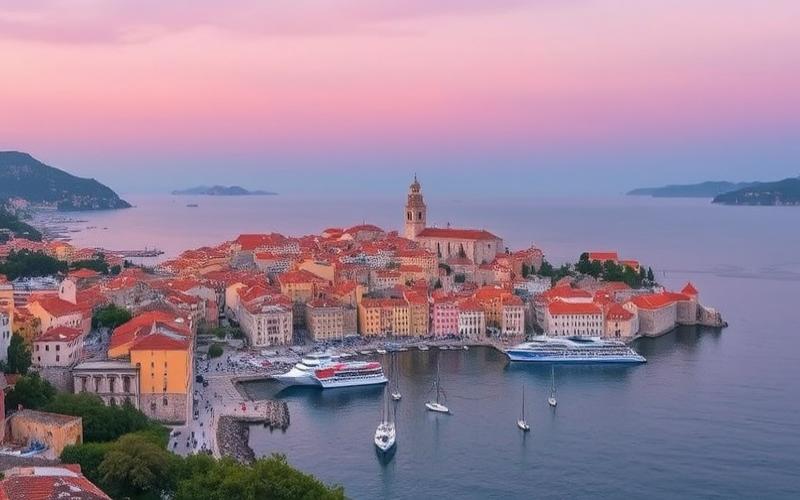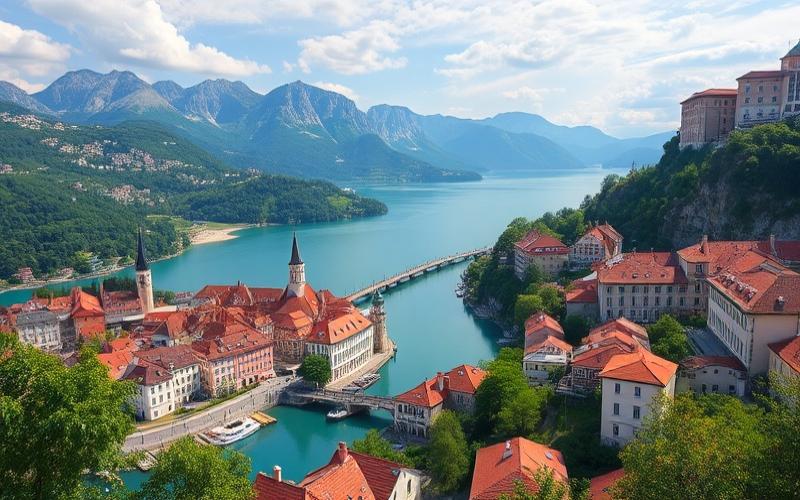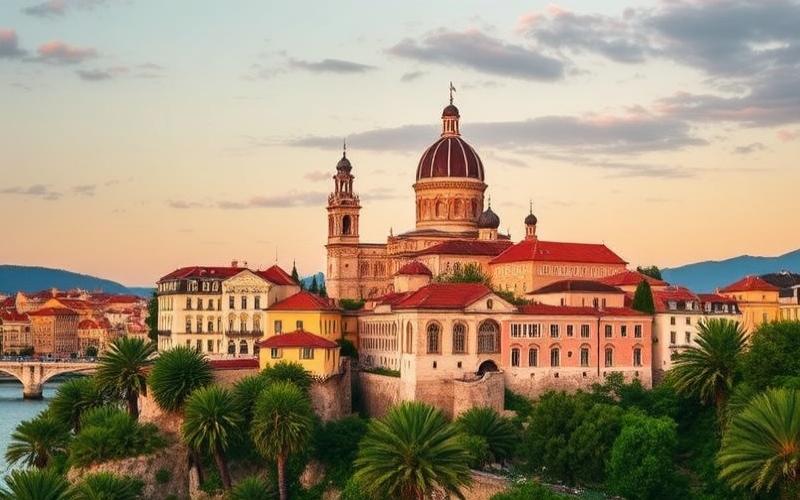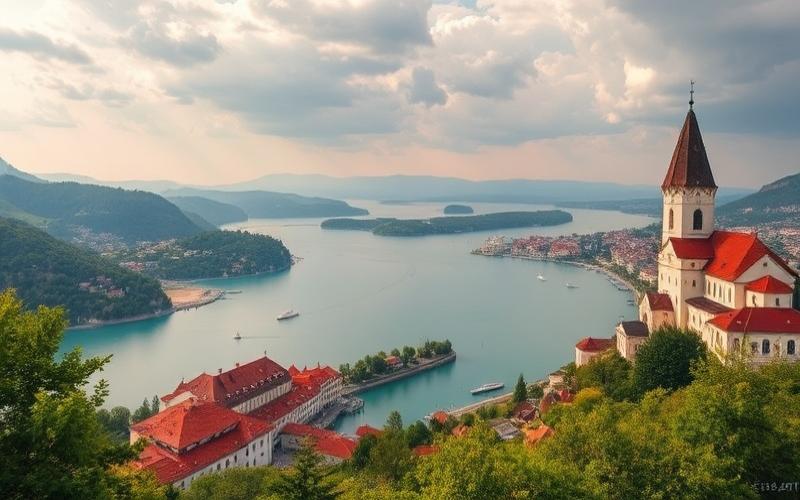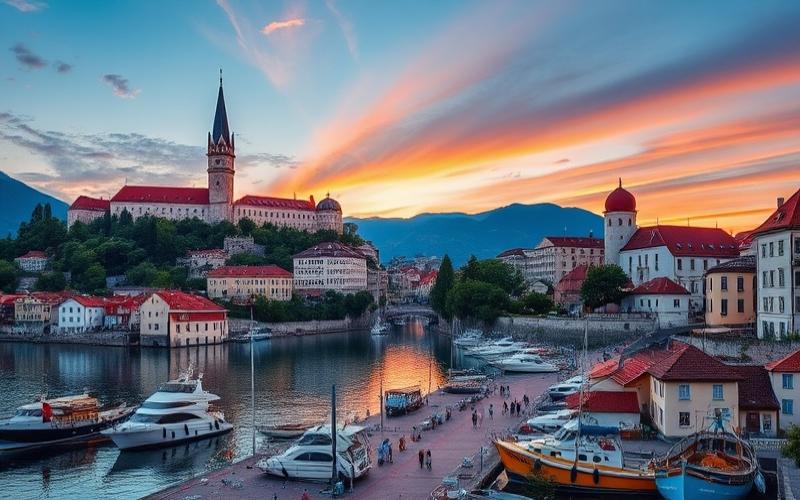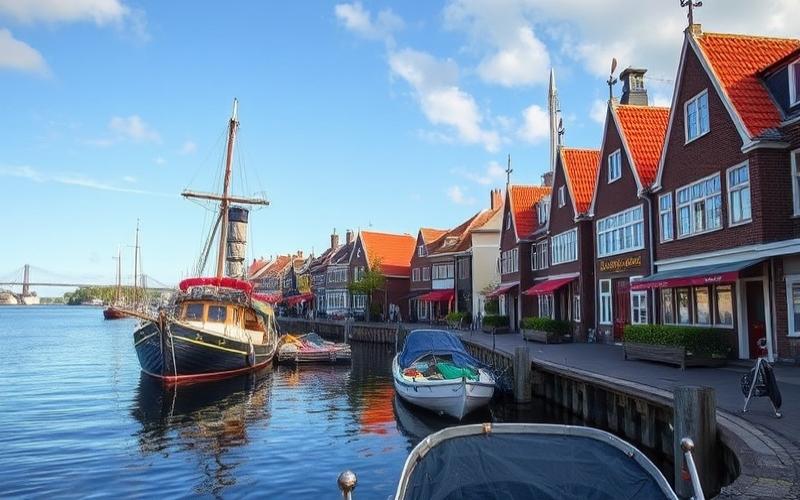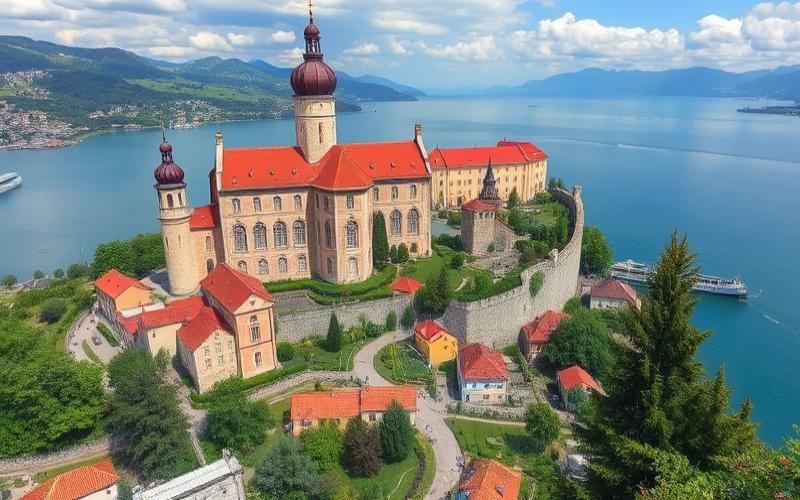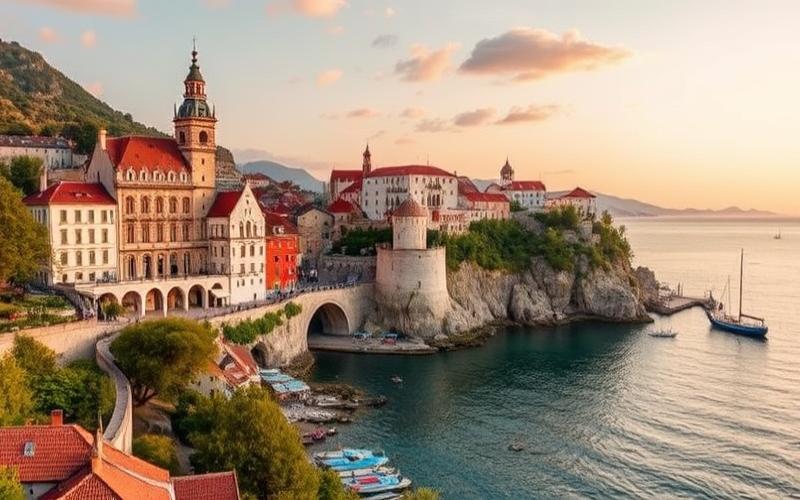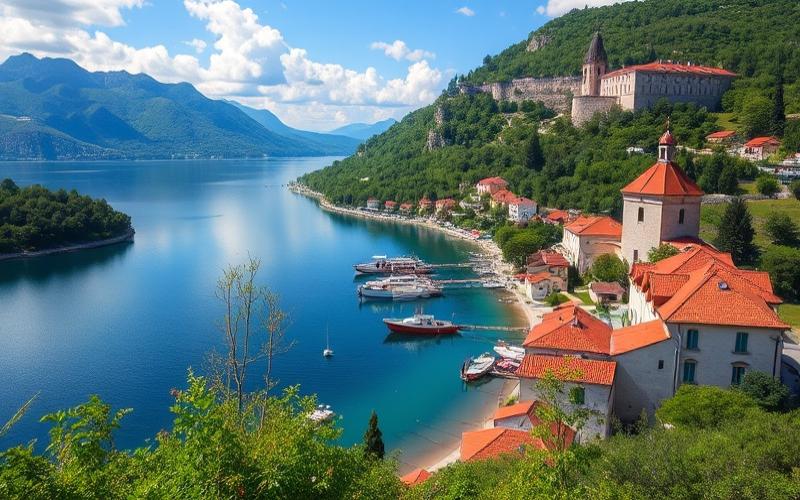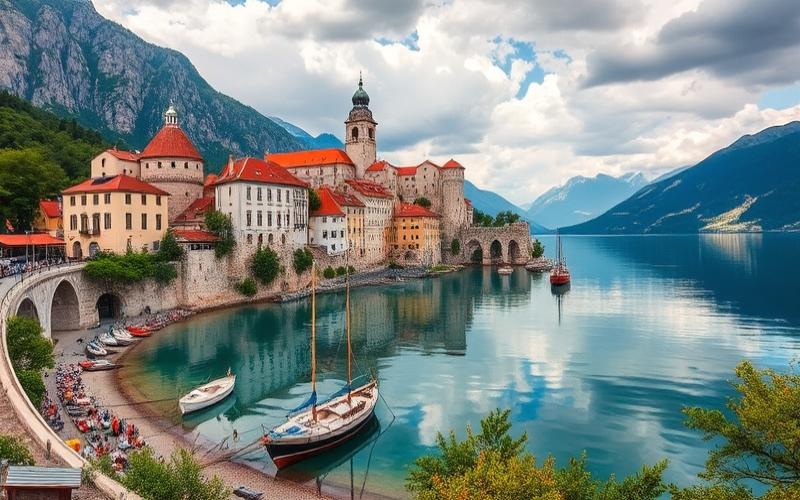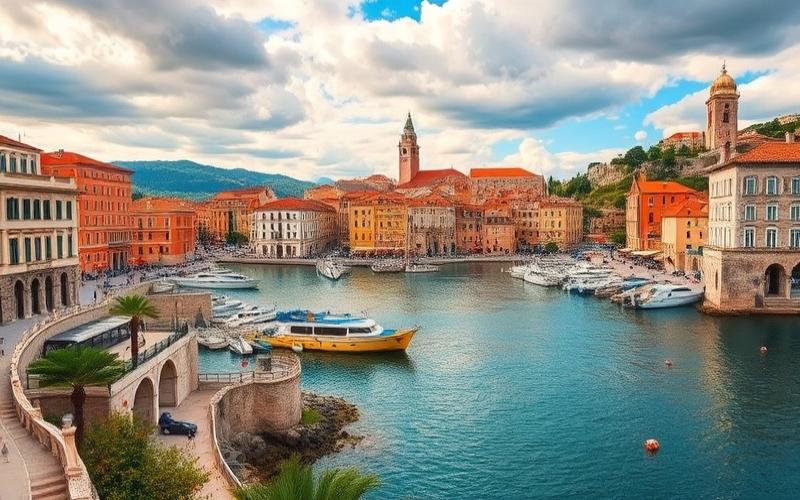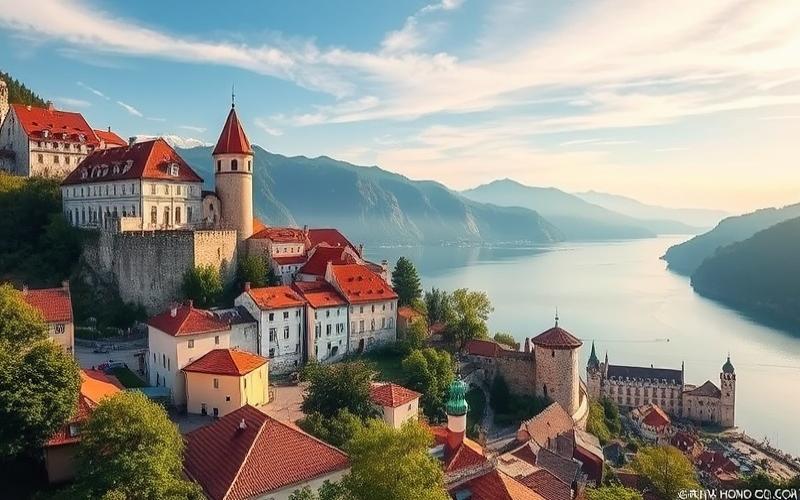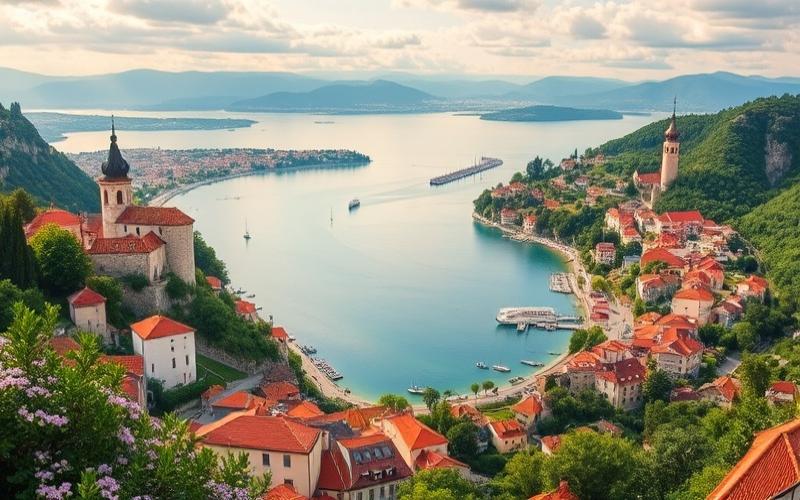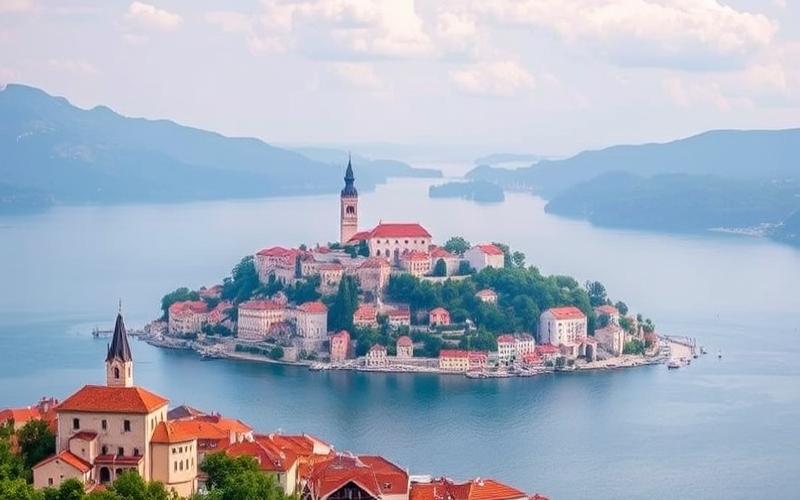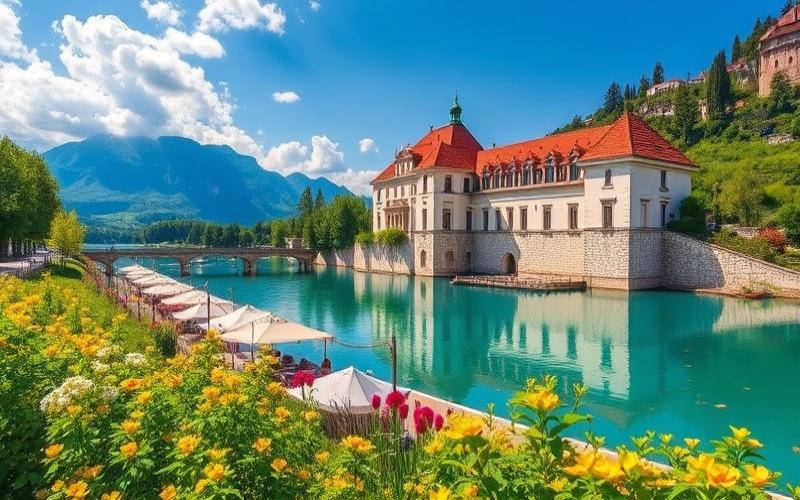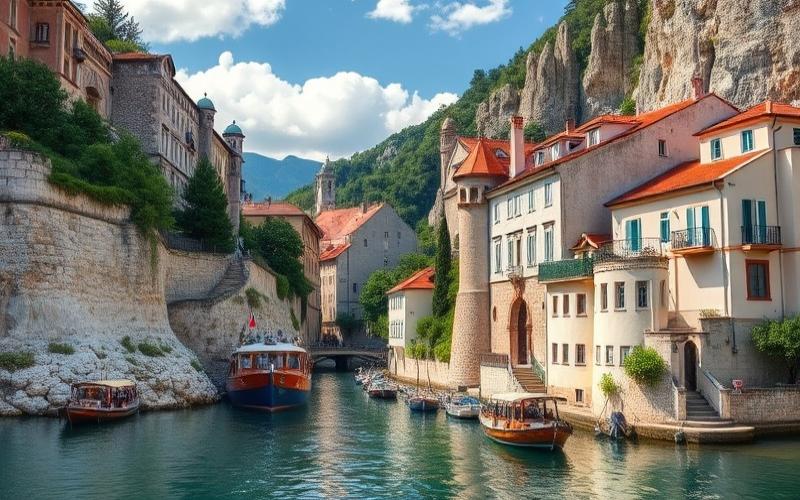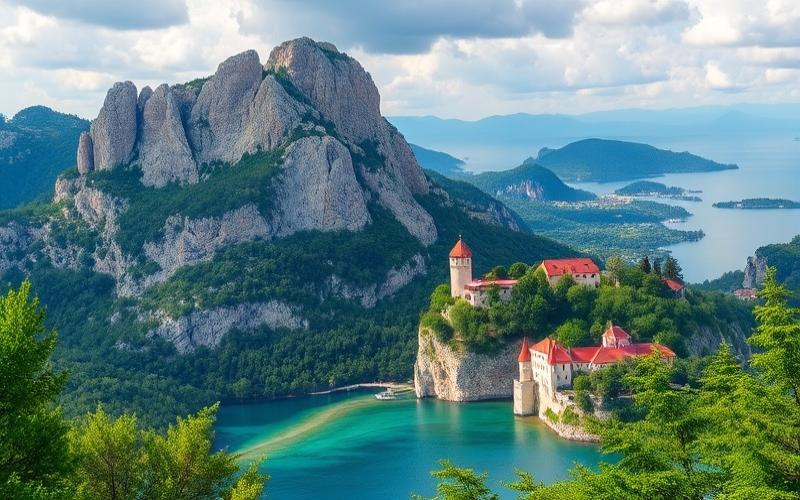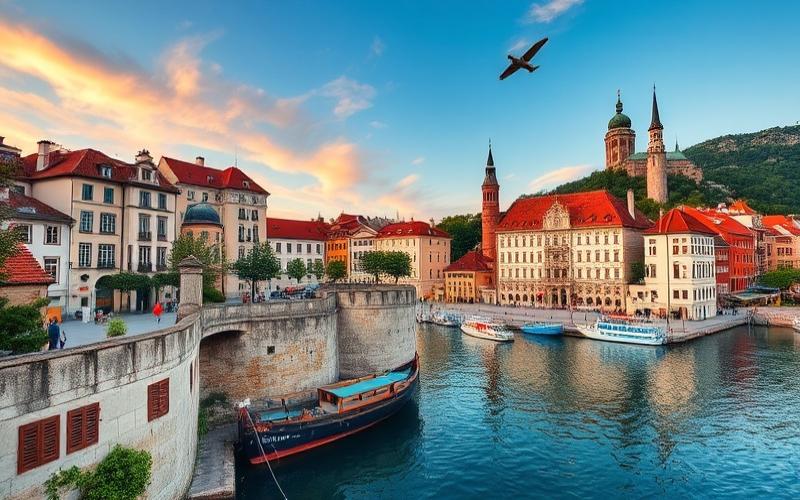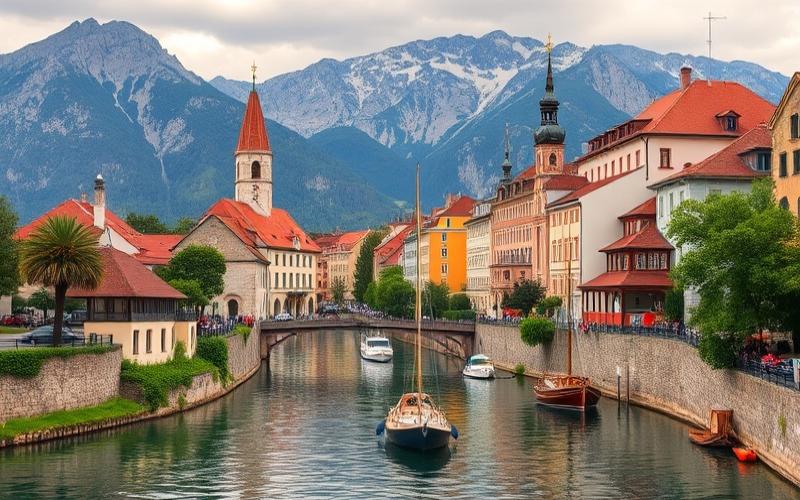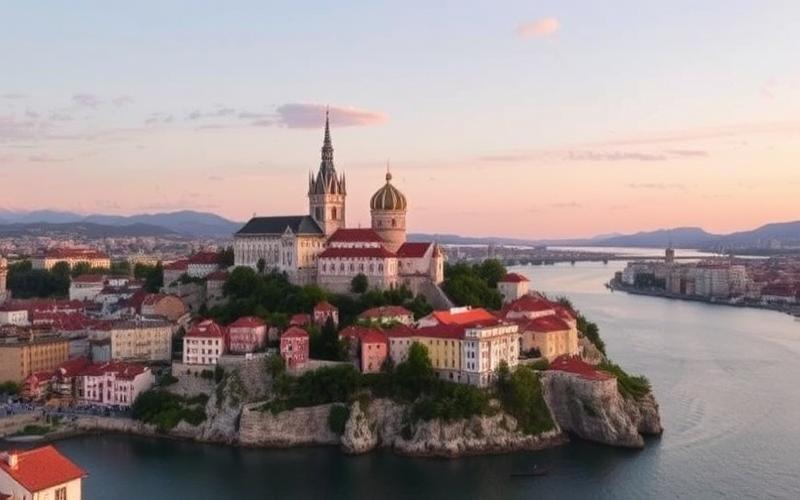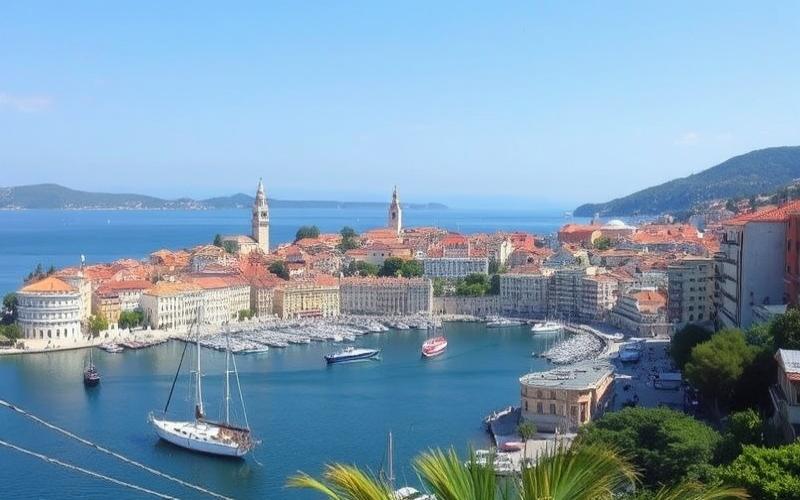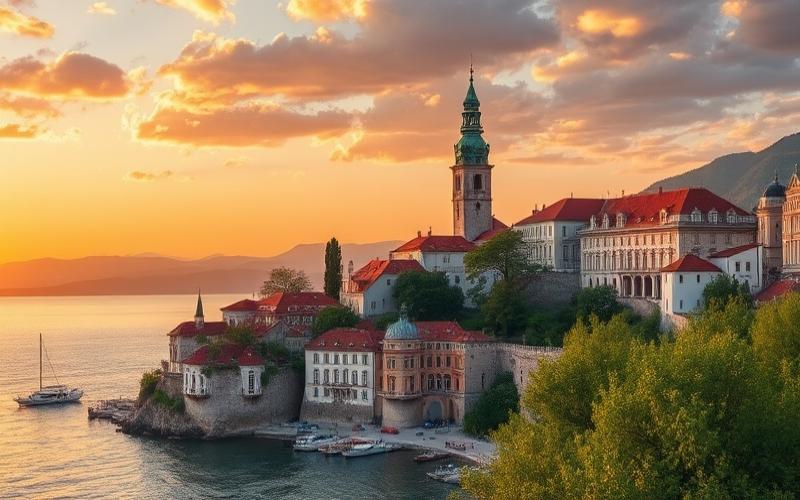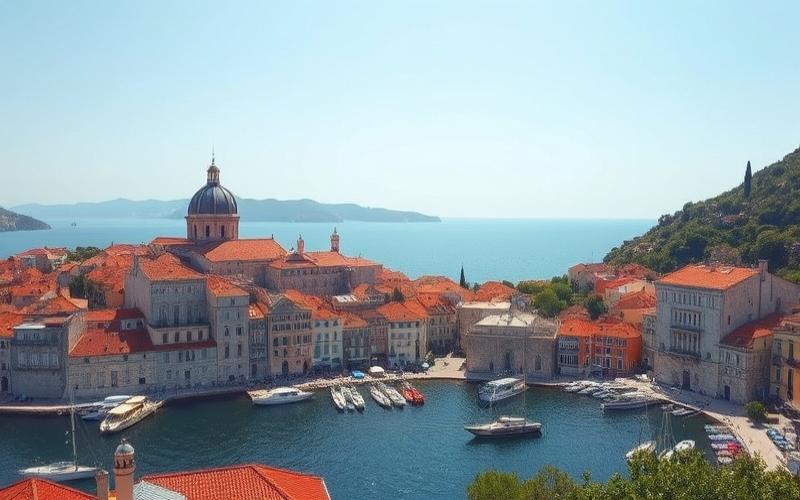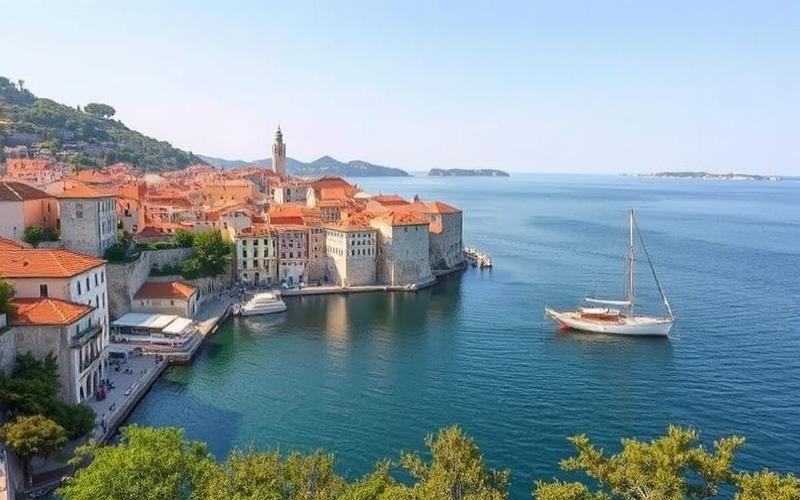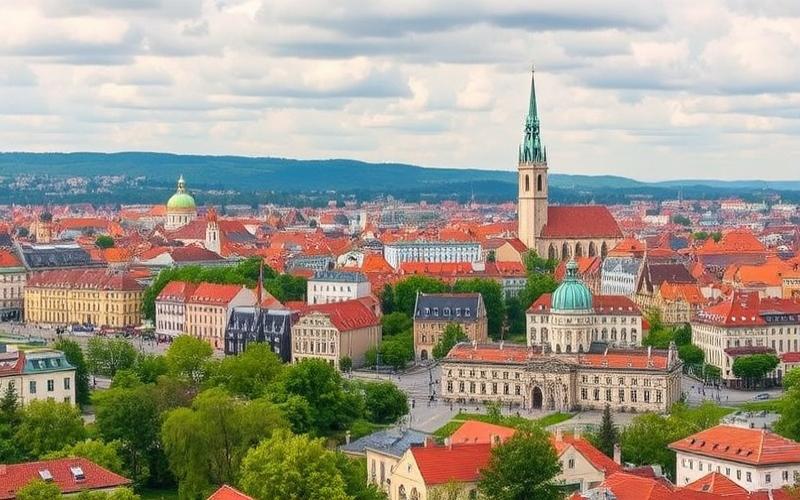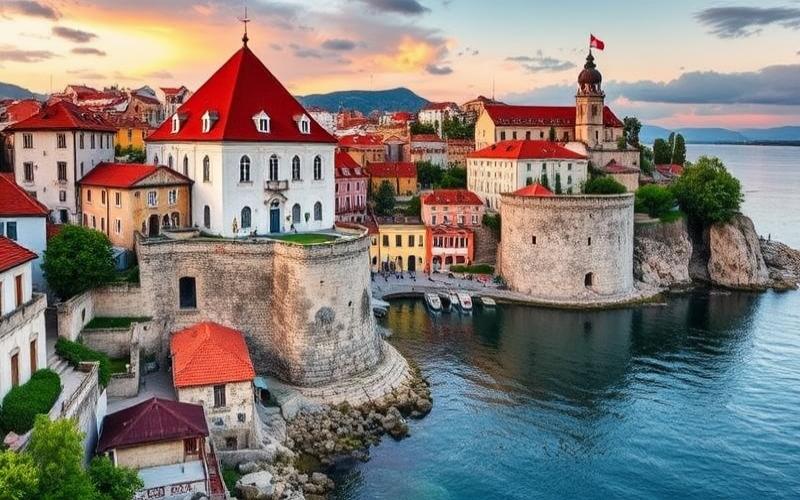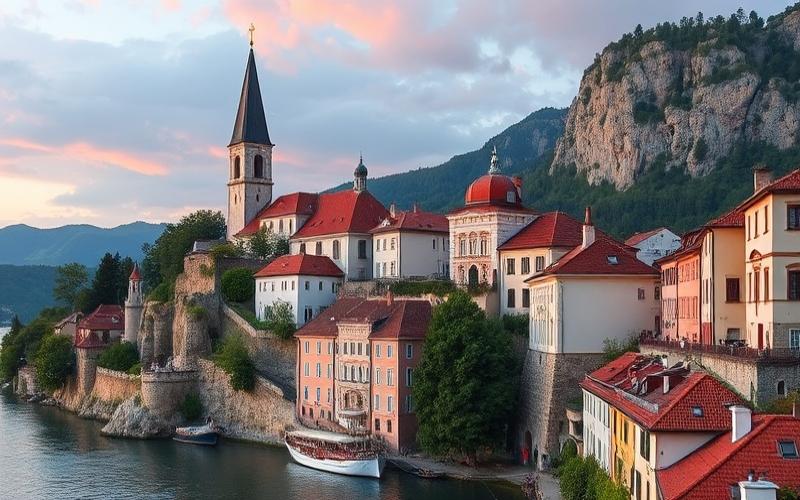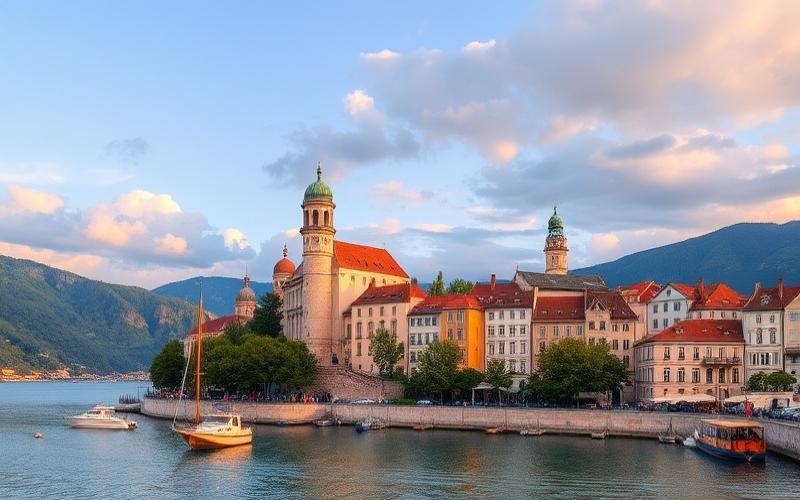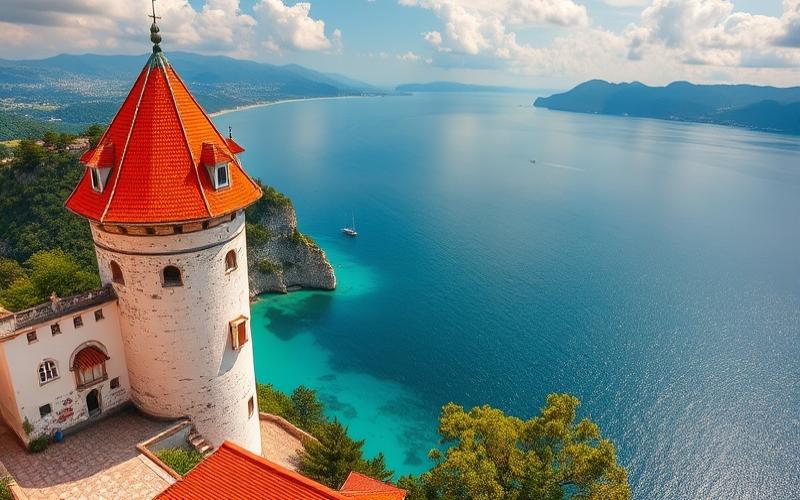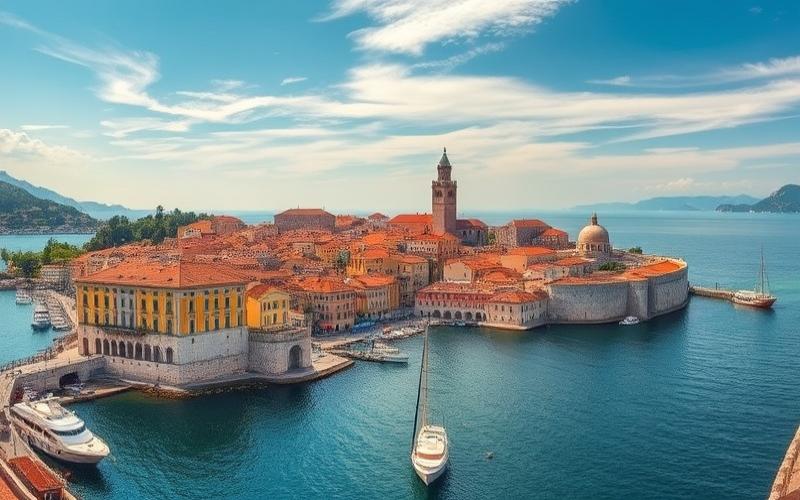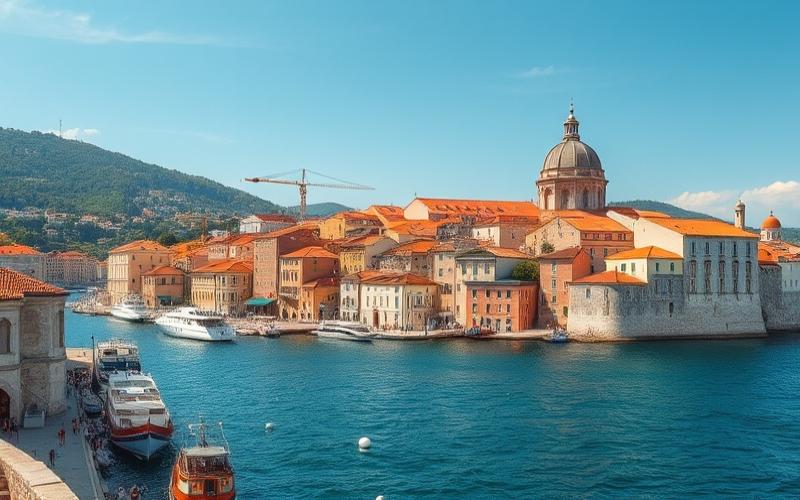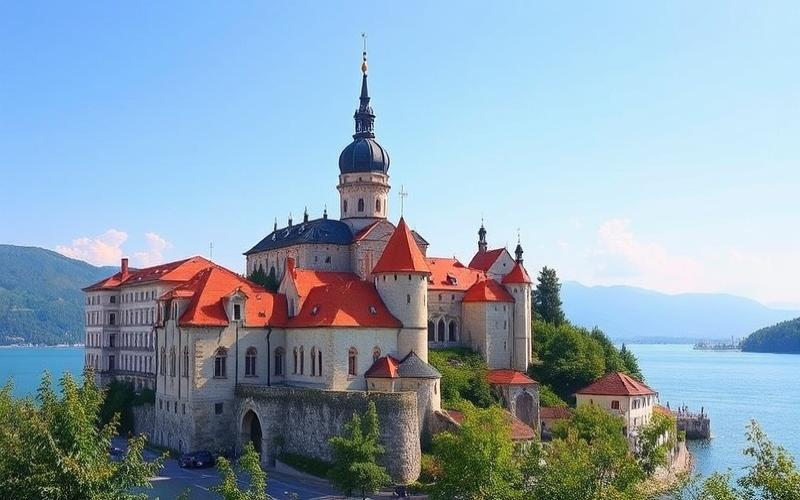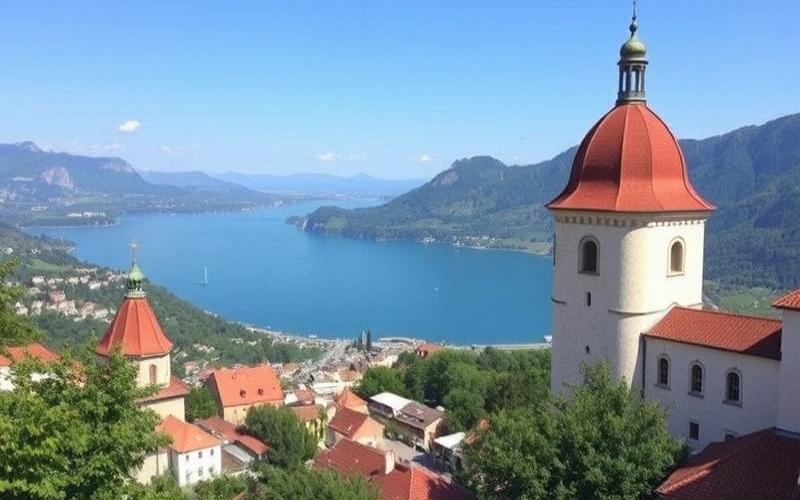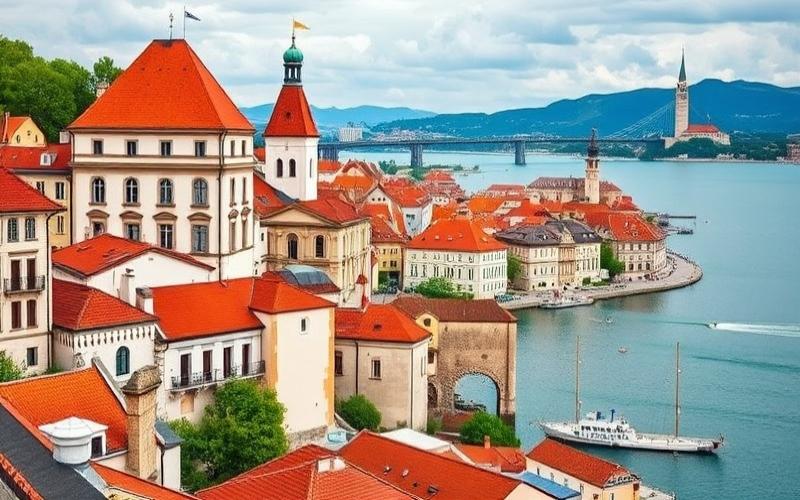
 Published on and written by Cyril Jarnias
Published on and written by Cyril Jarnias
Investing in Real Estate in Central and Eastern Europe
Deciding to invest in real estate in Central and Eastern Europe is a fascinating adventure, and mastering the unique characteristics of different markets is essential for making the right choice.
Top Destinations in the Region
Among the preferred destinations, Croatia stands out with its growing tourist appeal and enchanting coastal landscape. However, its neighbors, such as Slovenia, Hungary, and Montenegro, also offer enticing investment opportunities with varied dynamics and prices.
Real Estate Market Comparison
This article explores the strengths and weaknesses of the Croatian real estate market compared to its neighboring countries, focusing on key differences in terms of rental yield, legislative framework, and growth potential to guide savvy investors in their next project.
Good to know:
Central and Eastern Europe offer varied opportunities depending on the type of investment sought (seasonal rental, primary residence, etc.).
Analysis of Real Estate Investment Opportunities in Croatia and Its Neighbors
| Country | Average Price €/m² (urban/coastal) | Annual Growth 2024-2025 | Rental Yield Rate | Purchase Conditions for Foreigners | Specific Features and Trends |
| Croatia | 3,071 (Zagreb), 3,517 (Istria), 3,390 (Zadar), 3,655 (national average) | +9 to +12% depending on region | 4 to 6% (urban), higher in tourist areas | Free for EU citizens, conditions for non-EU, tax increases planned | Strong growth on Adriatic coast, dynamic tourist demand, tax increases planned for 2025 |
| Slovenia | ~3,000 (Ljubljana) | +7% | 3 to 5% | Relatively free, restrictions on agricultural land | Stable market, high prices in Ljubljana, appeal for political stability and euro |
| Hungary | ~3,000 (Budapest center) | +5% | 5 to 7% (Budapest) | Restrictions for non-EU, administrative procedures | Recovering market, decreasing interest rates, limited leverage outside Budapest center |
| Bosnia-Herzegovina | ~1,500 (Sarajevo center) | +4% | 6 to 8% | Restrictions for non-EU foreigners, complex procedures | Attractive prices, low market liquidity, uncertain prospects, slow growth |
| Serbia | ~2,000 (Belgrade center) | +6% | 6 to 8% | Relatively open, notarial procedures required | Dynamic in Belgrade, strong rental demand, expanding urban market |
| Montenegro | 2,500–3,500 (Budva, Kotor) | +8% | 7 to 10% (coast) | Open to foreign investment | Coastal market driven by tourism, luxury residence development, strong seasonal demand |
Real Estate Market Comparison
- Real estate prices are highest in Croatia on the coast (Istria, Dalmatia) and in Montenegro in coastal towns.
- Hungary (Budapest) and Slovenia (Ljubljana) show similar price levels, but growth is faster in Croatia and Montenegro.
- Bosnia-Herzegovina and Serbia offer the most affordable prices, but market liquidity is lower.
Current Trends
- Croatia: Upward dynamic, driven by tourism and eurozone integration, but anticipate real estate tax increases.
- Hungary: After a slowdown due to rising rates, gradual recovery in Budapest with decreasing interest rates, attractive rental yield in the center.
- Montenegro: Growth driven by luxury sector and international tourism, strong appeal for foreign investors.
- Slovenia: Stable growth, low volatility market, appeal for stability.
- Serbia & Bosnia-Herzegovina: Growing capital cities, but less mature markets, more pronounced political uncertainty.
Laws and Regulations for Foreigners
- Croatia: Free purchase for EU citizens, procedures for non-EU, taxes increasing from 2025.
- Hungary: Restrictions for non-EU, mandatory administrative procedures.
- Slovenia: Relatively free, restrictions on agricultural land.
- Bosnia-Herzegovina: Restrictions outside EU, complex notarial procedures.
- Serbia: Open market, notarial procedures required.
- Montenegro: One of the most open markets to foreigners.
Opportunities: Urban/Coastal vs Rural
- Urban areas (Zagreb, Budapest, Belgrade, Ljubljana) offer stability and regular rental demand, but often lower gross yields.
- Coastal areas (Istria, Dalmatia, Budva, Kotor) present the best prospects for appreciation and profitability, driven by tourism.
- Rural areas offer attractive prices but low liquidity and uncertain yields.
Rental Yield Rates
- Croatia: 4–6% in urban areas, up to 8% in high-demand tourist zones.
- Hungary: 5–7% in Budapest center, less in suburbs.
- Montenegro: 7–10% on the coast.
- Serbia and Bosnia-Herzegovina: 6–8% in capitals, lower elsewhere.
Tourism Impact
- Croatia, Montenegro and Slovenian coast: market highly dependent on international tourism, strong seasonality, high short-term rents.
- Budapest: appeal for urban tourism, but increasing regulation on short-term rentals.
- Serbia and Bosnia-Herzegovina: developing tourism, but still limited compared to Adriatic coast.
Economic and Political Outlook
- Croatia: Eurozone integration, political stability, but upcoming tax uncertainties.
- Hungary: Macroeconomic stability, but sometimes unpredictable government policy.
- Montenegro: Institutional stability, desire to attract foreign investment.
- Slovenia: Economic stability, mature market.
- Serbia and Bosnia-Herzegovina: Growth but political and economic volatility.
Recent Statistics and Projections
- Croatia: national average price at 3,655 €/m² (+9.33% year-on-year), average rental price at 14.61 €/m²/month (+8% year-on-year), forecast slowdown if taxes increase.
- Hungary: recovery expected in Budapest in 2025, decreasing interest rates, limited leverage outside center.
- Montenegro: price growth on coast above 8% per year, record rental yields.
Key takeaway: The Croatian and Montenegrin markets offer the best growth and profitability prospects for foreign investors, but regulatory and tax contexts are evolving rapidly.
Good to know:
In Croatia, the real estate market is dynamic, particularly in coastal areas favored by tourists, where demand remains strong and rental yields reach up to 7%. Comparatively, Slovenia presents a stable market with regulations favorable to foreigners, while Bosnia-Herzegovina and Serbia offer attractive prices but high political instability. In Hungary, urban areas like Budapest experience sustained real estate growth, although regulations are stricter for non-residents. Montenegro attracts with investment opportunities on the Adriatic coast, supported by an encouraging legal framework and rising tourism. Economic and political outlooks vary, with stable growth forecasts in Croatia and Slovenia, while regional tensions in Serbia could affect market stability. Real estate regulations are generally aligned to stimulate investments, but it’s crucial to research local specifics, such as the requirement for a residence permit to purchase in Hungary.
Comparison of Tax Systems in Croatia and Neighboring Countries
| Country | Real Estate Transaction Tax | Property Tax | Real Estate Capital Gains Tax | Benefits for Foreign Residents | Impact on Appeal to Foreign Investors |
|---|---|---|---|---|---|
| Croatia | 3% (primary residence), 4% (seasonal rental), 5% (commercial) | 0.6 to 8 €/m²/year (from 2025, depending on municipality) | 10% on capital gains if resold | For a 60 m² apartment used as primary residence in Zagreb, 2025 property tax would range between 36 and 480 €/year depending on municipal policy. | An investor in seasonal rental would pay 4% transfer duties at purchase, but would be exempt from property tax if renting more than 10 months/year. |
Key takeaway:
Tax differences strongly influence foreign investors’ strategies, who currently favor countries combining light taxation, stable regulatory framework, and real estate growth prospects.
Good to know:
In Croatia, the tax rate on real estate transactions is generally 3%, an advantage compared to Slovenia where it reaches 4%. However, Hungary offers a rate varying between 2% and 4%, with possible exemptions for first-time acquisitions, making these countries attractive to foreign investors. Regarding property taxes, Croatia and Slovenia apply relatively low rates, while Hungary and Bosnia-Herzegovina operate with more moderate rates. Real estate capital gains are taxed at a rate of 20% in Croatia, but decrease after owning the property for two years. In comparison, Serbia offers better tax advantages for foreign residents with reductions before five years of ownership. Montenegro, despite higher transaction taxes, offers attractive rates on capital gains, which, combined with stimulating legal initiatives, boosts investor interest. These tax differences significantly influence each country’s appeal, with Croatia remaining competitive due to its stable tax environment and benefits for foreign residents.
Advantages and Disadvantages of Buying Real Estate in Croatia Versus Its Neighbors
Advantages of Buying Real Estate in Croatia
- Market stability and continuous growth: The Croatian market is marked by stable growth, with persistent demand particularly in tourist areas like Dubrovnik, Split, or Istria. Prices are relatively stable and the real estate sector is considered safe for long-term returns.
- Strong tourist appeal: Over 10 million tourists visit Croatia annually, particularly its Adriatic coast. This appeal favors seasonal rental investments and increases profitability potential.
- Lower acquisition cost than some developed European neighbors: Buying an apartment or house in Croatia remains significantly more affordable than in countries like Italy or Austria.
- Cultural attractions and unique landscapes: Natural beauty, cultural diversity, and Croatian historical heritage increase real estate value appreciation in the medium to long term.
| Advantage | Description |
|---|---|
| Stability | Stable market, low price volatility |
| Tourism | Strong rental demand on coast |
| Cost | Lower prices than Italy/Austria |
| Appreciation | Exceptional landscapes and cultural appeal |
Disadvantages of Buying Real Estate in Croatia
- Complex administrative procedures: Bureaucratic procedures for foreigners remain heavy (multiple notarial steps, cadastral verifications…).
- Limited access to financing: Local banks rarely grant real estate loans to non-residents; often need to justify strong ties to the country or go through international organizations.
- Dependence on tourism: A significant portion of the market depends on tourist flow; any fluctuation (health crises, geopolitical changes) can strongly impact profitability.
Comparative Advantages in European Neighbors
- Slovenia:
- High political stability
- Advanced European integration (eurozone + Schengen), simplifying procedures for EU investors
- Transparent taxation
- Hungary / Serbia:
- More elaborate tax systems/investment funds facilitating certain real estate operations
- Bank loans sometimes more accessible to foreigners depending on profiles
- Bosnia:
- Regionally emerging market still unsaturated offering low-cost opportunities
| Neighboring Country | Strengths |
|---|---|
| Slovenia | Stable politics, EU integration |
| Hungary/Serbia | Tax advantages/financial systems |
| Bosnia | Unsaturated emerging market |
Observed Disadvantages in Neighbors
- Italy / Austria:
- Often lower yield rates in some highly touristic areas where prices are already high or overvalued
- Local taxation sometimes restrictive for foreign investors
- Albania / Emerging Balkans:
- Less stable economy potentially generating significant real estate market volatility
- Increased political/regulatory risks
Economic & Social Trends Influencing These Markets
Croatia:
Economic stability strengthened by European integration continues to attract more investors. Tourism growth strengthens demand but also exposes to its cycles.
Slovenia:
Prosperous economy thanks to strategic position between Balkans and Western Europe. Euro integration facilitates international transactions.
Hungary/Serbia/Bosnia:
Dynamic markets thanks to incentive policies towards foreign capital but subject to local socio-political uncertainties.
Italy/Austria:
Mature markets; saturation in some tourist regions reduces average rental yield despite strong legal security.
Summary Checklist
- Croatia = stability + moderate cost + tourist appeal but administrative complexity + tourism dependence
- Slovenia = political security + EU regulatory ease
- Hungary/Serbia = tax advantages/efficient financial systems
- Bosnia = unsaturated market opportunities but economic/political instability risk
Good to know:
Buying real estate in Croatia benefits from market stability and continuous growth, with high rental potential thanks to the tourist appeal of the Adriatic coast and generally lower costs than countries like Italy or Austria. However, non-resident buyers may encounter complex bureaucratic procedures and limited financing availability. Compared to its neighbors, Slovenia offers notable political stability and better European integration, while Hungary and Serbia present more advantageous tax or financing systems. Conversely, emerging markets like Bosnia offer opportunities due to their low saturation, but less stable economies like Albania can increase risks. Overvaluation in some areas in Italy or Austria may also limit investment returns. These factors, combined with current economic and social trends, strongly influence purchasing decisions.
Real Estate Market Trends in Croatia Compared to Neighboring Countries
Recent Real Estate Market Trends in Croatia
- Croatian real estate prices show marked growth: price index reached 214.18 points in first quarter 2025, representing annual increase over 13%. Since 2016, prices have almost doubled (+96%).
- Demand is mainly oriented toward apartments and houses located on Adriatic coast, highly sought for tourist rental potential and as secondary residences.
- Supply remains limited in tourist areas, increasing price pressure. Conversely, other segments (offices, land) sometimes experience occasional decreases.
Interest from Local and Foreign Investors
- Foreign investors play growing role (Germany, Austria, United Kingdom and recently Canada/United States). They often favor seasonal rental or acquisition of secondary residences.
- EU accession facilitated purchases for non-residents; political stability strengthens this appeal.
- New regulations aim to limit overtourism by further regulating short-term rental (Airbnb), with reinforced taxes and high co-owner agreement threshold. This could reduce seasonal rental supply while increasing that dedicated to permanent residents.
Comparison with Neighboring Countries
| Country | Recent Price Evolution | Main Demand | Supply | Foreign Investors |
|---|---|---|---|---|
| Croatia | +13% annual; continuous rise | Coast & tourism | Strong tension in tourist zones; increased STR* regulation | Strong European/US presence |
| Slovenia | Moderate increase since 2020 | Capital & alpine resorts | Restricted supply | Mainly Europeans |
| Hungary | Stagnation or slight decline since post-COVID | Budapest/student rental | Relatively abundant outside city center | Low outside capitals |
| Serbia | Rapid growth in Belgrade (>10% annual) | Urban/local investment | Growing new supply | Regional/Balkan investors |
| Montenegro | Rapid increase on Adriatic coast | Coast/luxury tourism | Limited supply; new coastal projects | Mainly Russians/Middle East |
*STR = Short-Term Rental
Slovenian and Montenegrin markets are also driven by their coastline or tourist resorts but generally present less regulatory pressure than Croatia. Hungary shows more stable or even stagnant dynamic while Serbia experiences sustained urban expansion.
Influential Economic, Political and Social Factors
- Economy: In Croatia as in its Adriatic neighbors (Montenegro), tourism plays major role in real estate demand. Eurozone integration also facilitates Croatian real estate credit. Hungary/Serbia remain more dependent on local context.
- Politics: Regulations aiming to contain overtourism emerging mainly in Croatia while still limited elsewhere. Croatian political stability favors international investments more.
- Social: Strong tendency to buy for secondary residence or rental investment among foreign populations throughout Adriatic region.
List – Main Expected Developments:
- Introduction of new annual taxes on vacant/short-term housing from January 2025 — potential impact: partial release of residential rental stock.
- Possible bullish slowdown: some experts predict temporary correction (-5% estimated year-end according to some operators), but structural trend remains positive thanks to tourist dynamism.
Comparative Forecasts:
Croatia
- Slowed but still solid rise thanks to international tourism
- Strengthened regulations could stabilize/make residential market more accessible
Neighboring Countries
- Slovenia/Montenegro continue growth linked to high-end/touristic sector
- Hungary/Serbia show more stable or regionalized prospects
List – Possible Impacts for International Investors:
- Croatian market likely to attract even more thanks to economic/political stability.
- New taxes however risk increasing total cost for seasonal rentals.
- Purchase decisions will be influenced by these regulatory trends as well as overall price level compared to neighboring alternatives.
The Croatian real estate market remains attractive compared to neighboring countries due to its tourist dynamism and stable European regulation—but now requires increased attention to local legislative developments likely to influence future profitability.
Good to know:
In Croatia, the real estate market recently showed price increases, partially fueled by strong demand from foreign investors, particularly in coastal regions. This trend differs from Slovenia, where price increases are more moderate due to strict transaction regulations. In Hungary, supply exceeds demand, leading to price stabilization, while the Serbian market, supported by tax incentives, attracts increasing investors. In Montenegro, foreign demand remains high, particularly for luxury properties. Economic factors, like stable economic growth and favorable tax policies in Croatia, support continued price increases, although adjustments are expected medium-term in response to potential market saturation. International investors should evaluate these aspects to optimize purchase decisions, considering price competitiveness and regulatory framework of each country.
Disclaimer: The information provided on this website is for informational purposes only and does not constitute financial, legal, or professional advice. We encourage you to consult qualified experts before making any investment, real estate, or expatriation decisions. Although we strive to maintain up-to-date and accurate information, we do not guarantee the completeness, accuracy, or timeliness of the proposed content. As investment and expatriation involve risks, we disclaim any liability for potential losses or damages arising from the use of this site. Your use of this site confirms your acceptance of these terms and your understanding of the associated risks.


